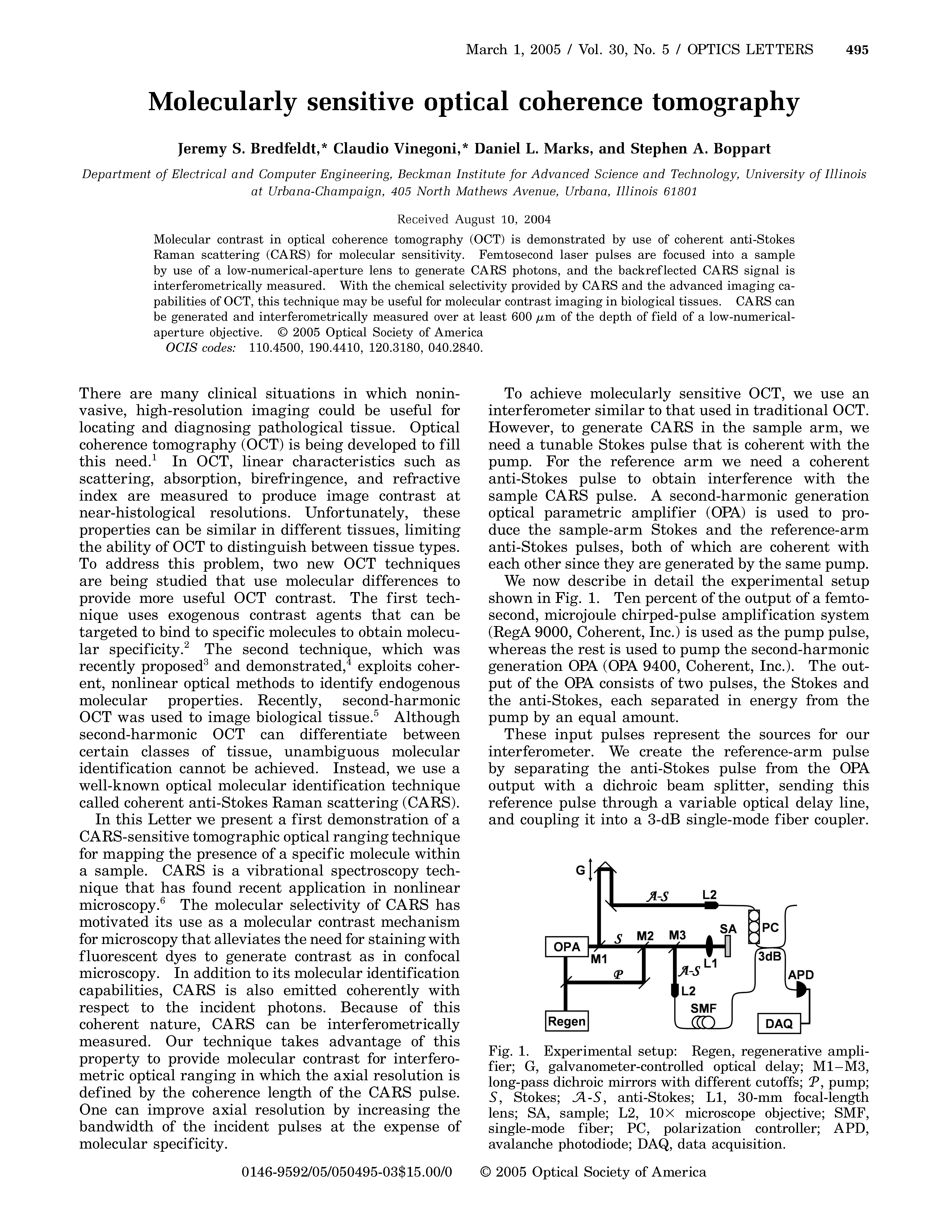Molecularly sensitive optical coherence tomography
Optics Letters
Abstract
"Molecular contrast in optical coherence tomography (OCT) is demonstrated by use of coherent anti-Stokes Raman scattering (CARS) for molecular sensitivity. Femtosecond laser pulses are focused into a sample by use of a low-numerical-aperture lens to generate CARS photons, and the backreflected CARS signal is interferometrically measured. With the chemical selectivity provided by CARS and the advanced imaging capabilities of OCT, this technique may be useful for molecular contrast imaging in biological tissues. CARS can be generated and interferometrically measured over at least 600 mum of the depth of field of a low-numerical-aperture objective. (C) 2005 Optical Society of America."
Full citation
For attribution in academic contexts, please cite this work as:
| Bredfeldt, J. S., Vinegoni, C., Marks, D. L., & Boppart#, S. A. (2005). Molecularly sensitive optical coherence tomography. Optics Letters, 30(5), 495–497. https://doi.org/10.1364/ol.30.000495 |

Bredfeldt, J. S., Vinegoni, C., Marks, D. L., & Boppart#, S. A. (2005). Molecularly sensitive optical coherence tomography. Optics Letters, 30(5), 495–497. https://doi.org/10.1364/ol.30.000495